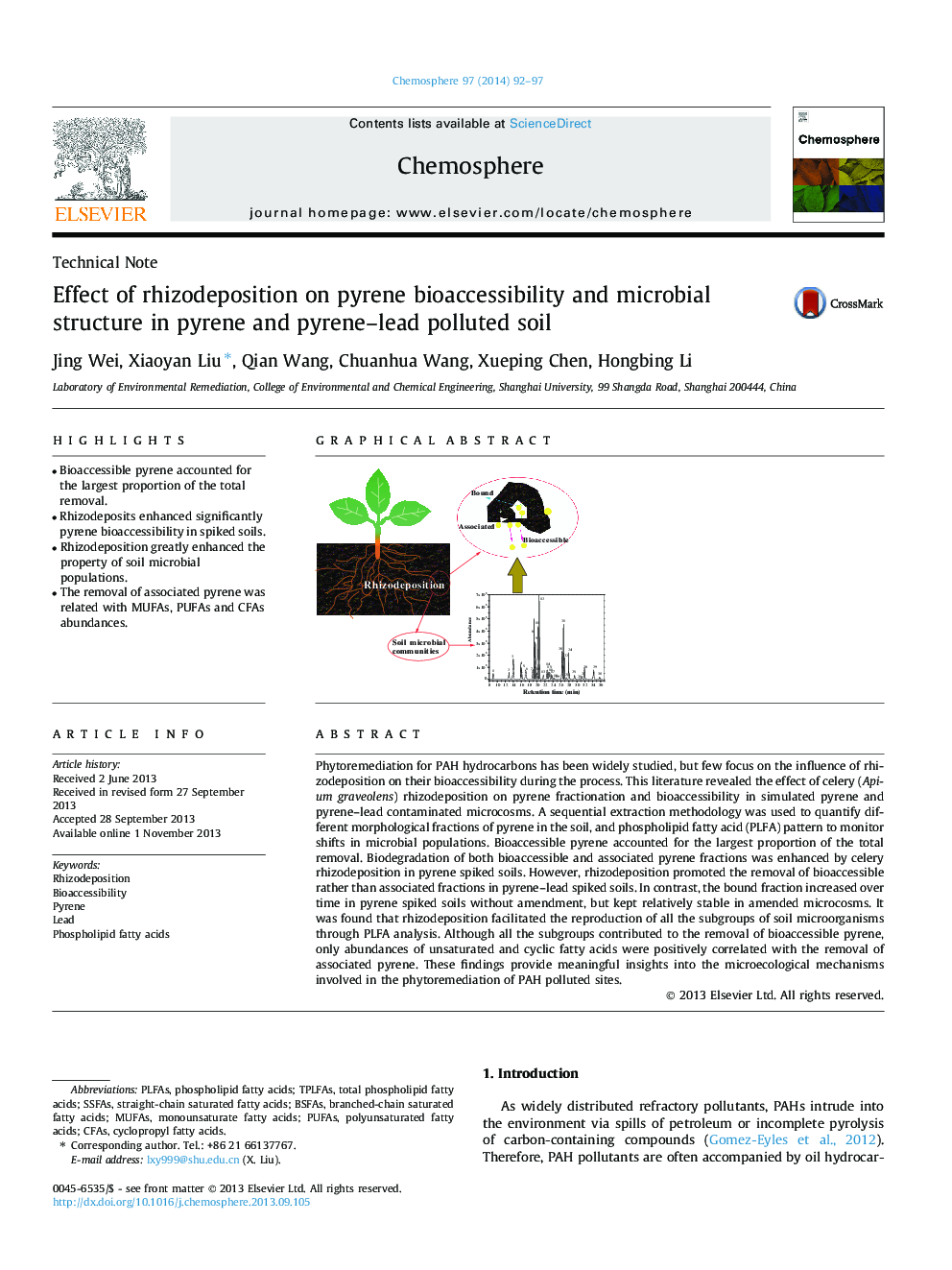| کد مقاله | کد نشریه | سال انتشار | مقاله انگلیسی | نسخه تمام متن |
|---|---|---|---|---|
| 4408990 | 1618874 | 2014 | 6 صفحه PDF | دانلود رایگان |
• Bioaccessible pyrene accounted for the largest proportion of the total removal.
• Rhizodeposits enhanced significantly pyrene bioaccessibility in spiked soils.
• Rhizodeposition greatly enhanced the property of soil microbial populations.
• The removal of associated pyrene was related with MUFAs, PUFAs and CFAs abundances.
Phytoremediation for PAH hydrocarbons has been widely studied, but few focus on the influence of rhizodeposition on their bioaccessibility during the process. This literature revealed the effect of celery (Apium graveolens) rhizodeposition on pyrene fractionation and bioaccessibility in simulated pyrene and pyrene–lead contaminated microcosms. A sequential extraction methodology was used to quantify different morphological fractions of pyrene in the soil, and phospholipid fatty acid (PLFA) pattern to monitor shifts in microbial populations. Bioaccessible pyrene accounted for the largest proportion of the total removal. Biodegradation of both bioaccessible and associated pyrene fractions was enhanced by celery rhizodeposition in pyrene spiked soils. However, rhizodeposition promoted the removal of bioaccessible rather than associated fractions in pyrene–lead spiked soils. In contrast, the bound fraction increased over time in pyrene spiked soils without amendment, but kept relatively stable in amended microcosms. It was found that rhizodeposition facilitated the reproduction of all the subgroups of soil microorganisms through PLFA analysis. Although all the subgroups contributed to the removal of bioaccessible pyrene, only abundances of unsaturated and cyclic fatty acids were positively correlated with the removal of associated pyrene. These findings provide meaningful insights into the microecological mechanisms involved in the phytoremediation of PAH polluted sites.
Figure optionsDownload as PowerPoint slide
Journal: Chemosphere - Volume 97, February 2014, Pages 92–97
